In this guide, we compare Unbounce vs Leadpages side by side to see which of these popular landing page builders is best overall.
Both platforms offer robust tools designed to create, publish, and test landing pages that captivate audiences and convert visitors into leads. However, as similar as they might seem at first glance, Unbounce and Leadpages do have some distinct differences, which means one will undoubtedly suit you better than the other.
Short on time?
Unbounce vs Leadpages: Three Key Differences to Know About
- Unbounce includes AI optimization with Smart Traffic, which can help improve your conversion rates. This can increase your leads and sales without any extra work from you. Leadpages doesn’t have this feature.
- Leadpages is easier to use and has been designed with simplicity and speed in mind. This makes it easier for beginners or those with limited time to create and publish landing pages.
- Unbounce has more customization options than Leadpages. This makes it a great choice for larger businesses who want to create completely custom landing pages.
Unbounce Overview


Unbounce is a popular platform designed for creating and optimizing landing pages. It enables marketers, entrepreneurs, and businesses to improve their online marketing by easily building landing pages, pop-ups, and sticky bars without the need for advanced technical knowledge or coding skills.
The core focus of Unbounce is on maximizing conversion rates, helping users to more effectively turn visitors into leads, subscribers, or customers.
Key features of Unbounce include:
- Drag-and-drop page builder
- Templates
- A/B testing
- Pop-ups and sticky bars
- AI copywriting
- AI optimization
- Analytics
- Integrations and apps.
Unbounce is widely used by businesses looking to increase their online presence and conversion rates, offering a range of tools and features designed to optimize web pages for higher engagement and conversions.
Leadpages Overview
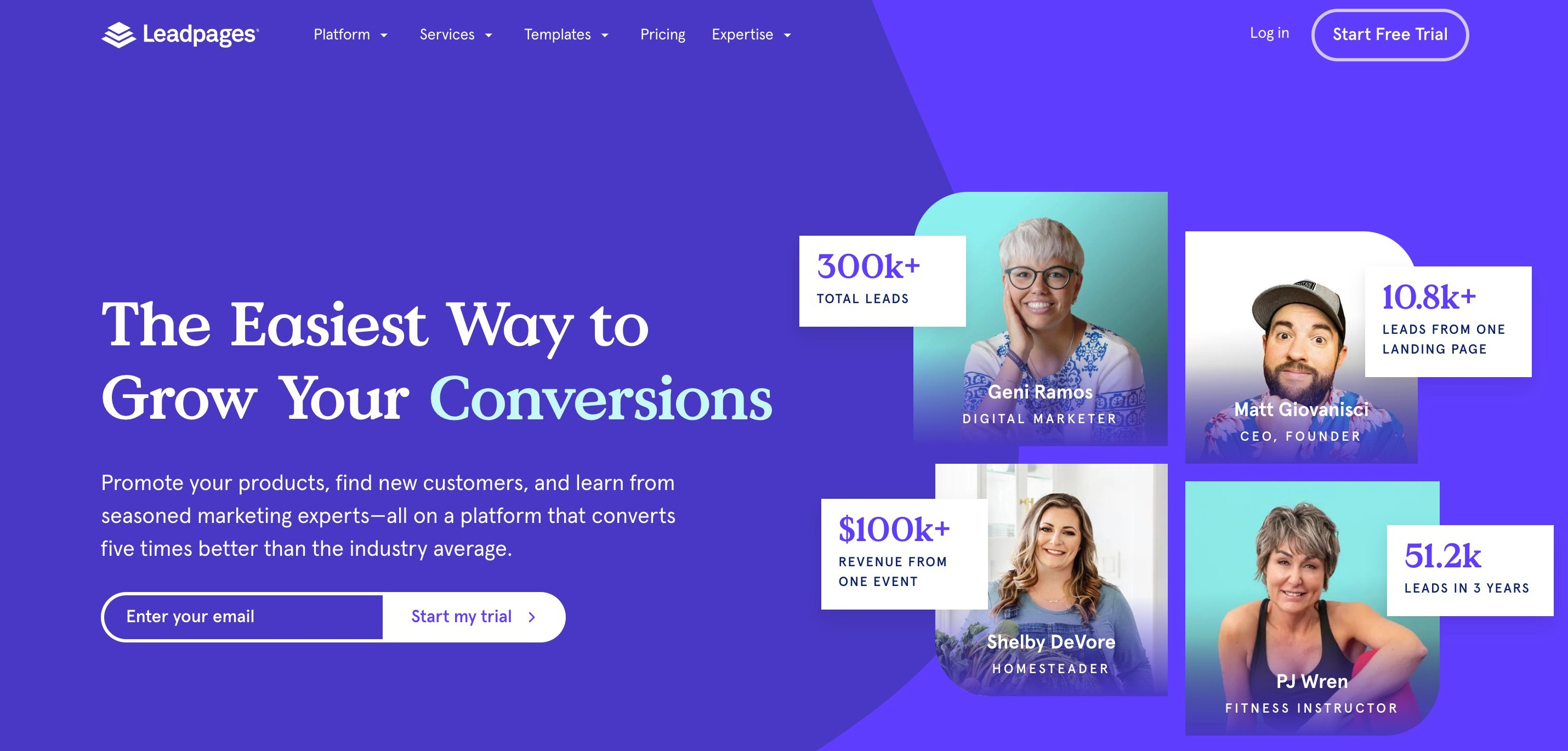

Leadpages is a popular landing page tool designed to help businesses create high-converting landing pages, websites, pop-ups, and alert bars. It’s known for being user-friendly, making it a great choice for beginners as well as seasoned marketers.
Key features of Leadpages include:
- Customizable templates
- Drag-and-drop page builder
- Over 250+ professionally-designed landing page templates to choose from
- A/B testing
- Real-time analytics to track page performance
- AI copy and images
- Lead management
- Integrations with various email marketing services, CRM platforms, and payment processors
- Unlimited landing pages
- Website builder.
Leadpages’ main focus is to help users increase their ROI by converting more website visitors into leads and customers.
Unbounce vs Leadpages: Page Building Features and Templates (Unbounce Wins!)
Unbounce provides users with two landing page builders to choose from: Classic Builder and Smart Builder.
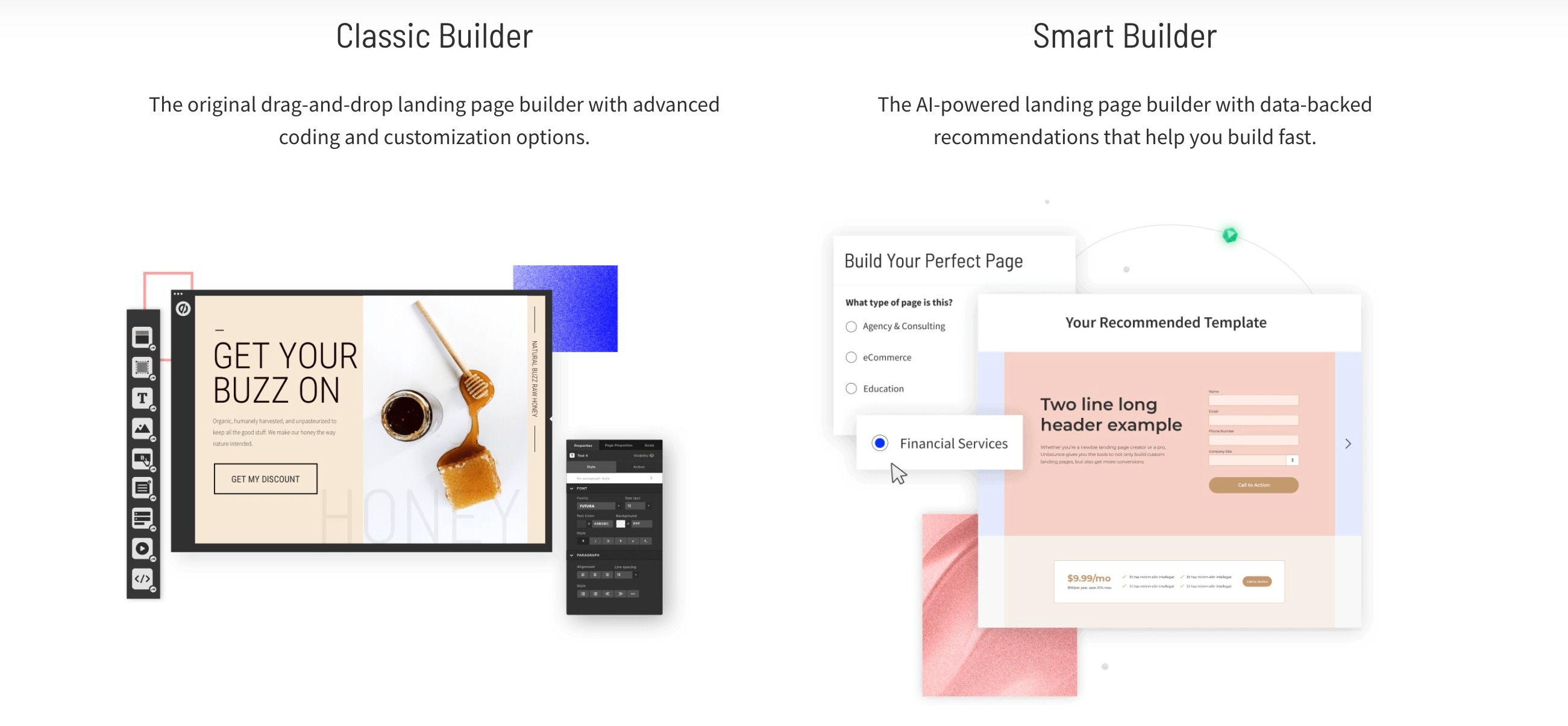

Classic Builder uses a drag-and-drop interface, allowing you to create and customize your landing page until it’s exactly how you want it.
One of the best features of Classic Builder is the dynamic text replacement feature. This means you can create a slightly different landing page for every ad you run. This is a great way to optimize conversions. You also have the option to design unique page elements using CSS or JavaScript if you prefer.
On the other hand, Smart Builder is the quickest and easiest way to create landing pages with Unbounce. It uses AI to build landing pages based on data-backed recommendations. It can generate the copy for you and overall allows you to create a fully optimized page in half the time it would take using other landing page builders.
Unbounce also includes a Smart Traffic feature that automatically routes traffic to the optimal landing page depending on the visitor’s demographics.
Now, onto Leadpages.
Leadpages is known for its simplicity and ease of use, focusing on getting effective landing pages up and running quickly. When building a page with Leadpages, you start out with one of the 250+ professionally designed, pre-optimized templates and work from there.
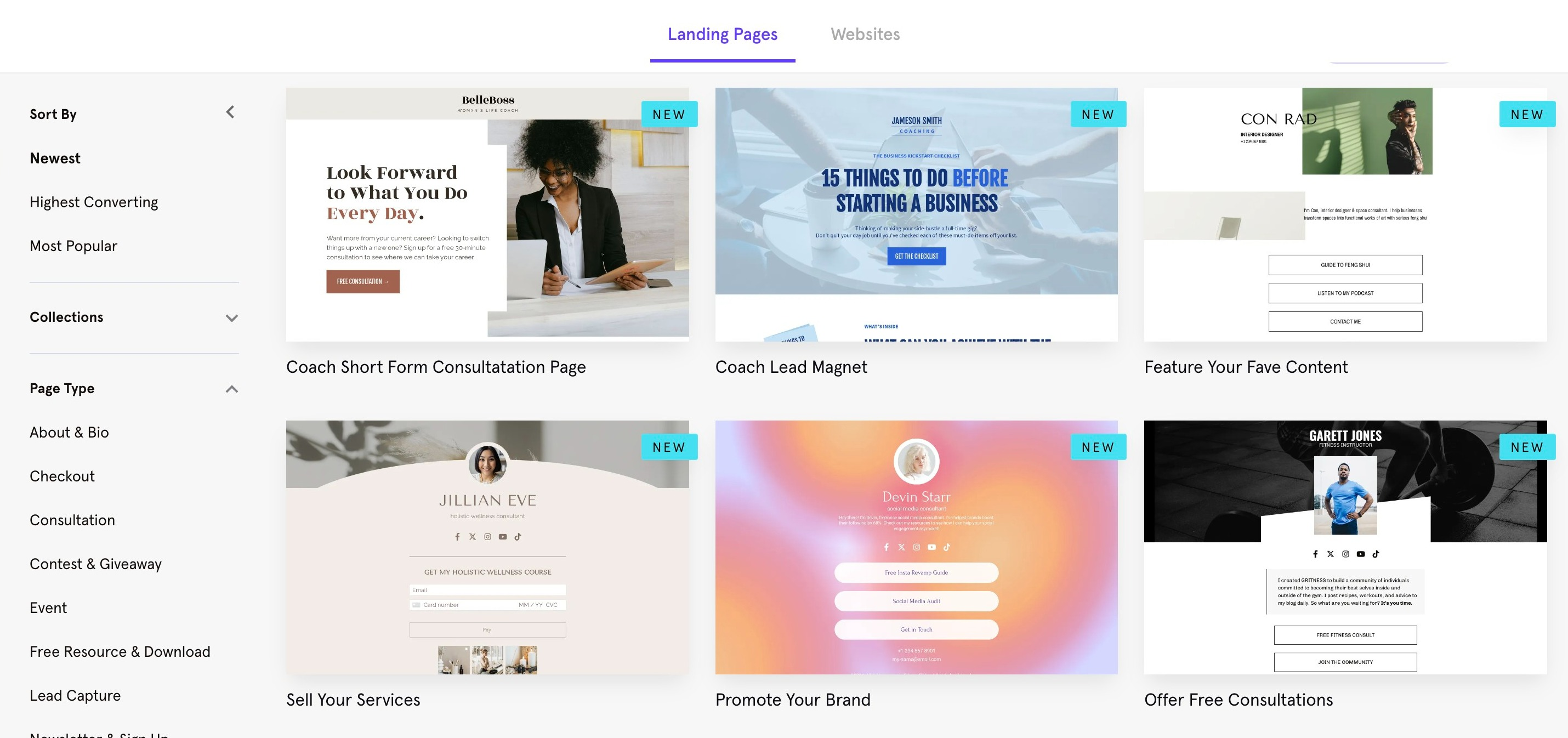

You can customize almost all areas of the template using the drag-and-drop editor. However, customization options are generally more limited than those offered by Unbounce. This makes Leadpages a great option for beginners.
Like Unbounce, Leadpages takes advantage of AI to help you create your landing pages, with the option to generate AI copy and images at the click of a button.
The Verdict: Unbounce offers more customization options than Leadpages. However, Leadpages is a good option for beginners, or anyone who prioritizes speed and simplicity over intricate customization.
Pop-ups and Sticky Bars (Unbounce Wins!)
Unbounce offers a high degree of customization for pop-ups and sticky bars. You can build pop-ups and sticky bars in minutes using the drag-and-drop pop-up builder. You also have the option to customize who can see your pop-ups, and even trigger exactly when they appear.
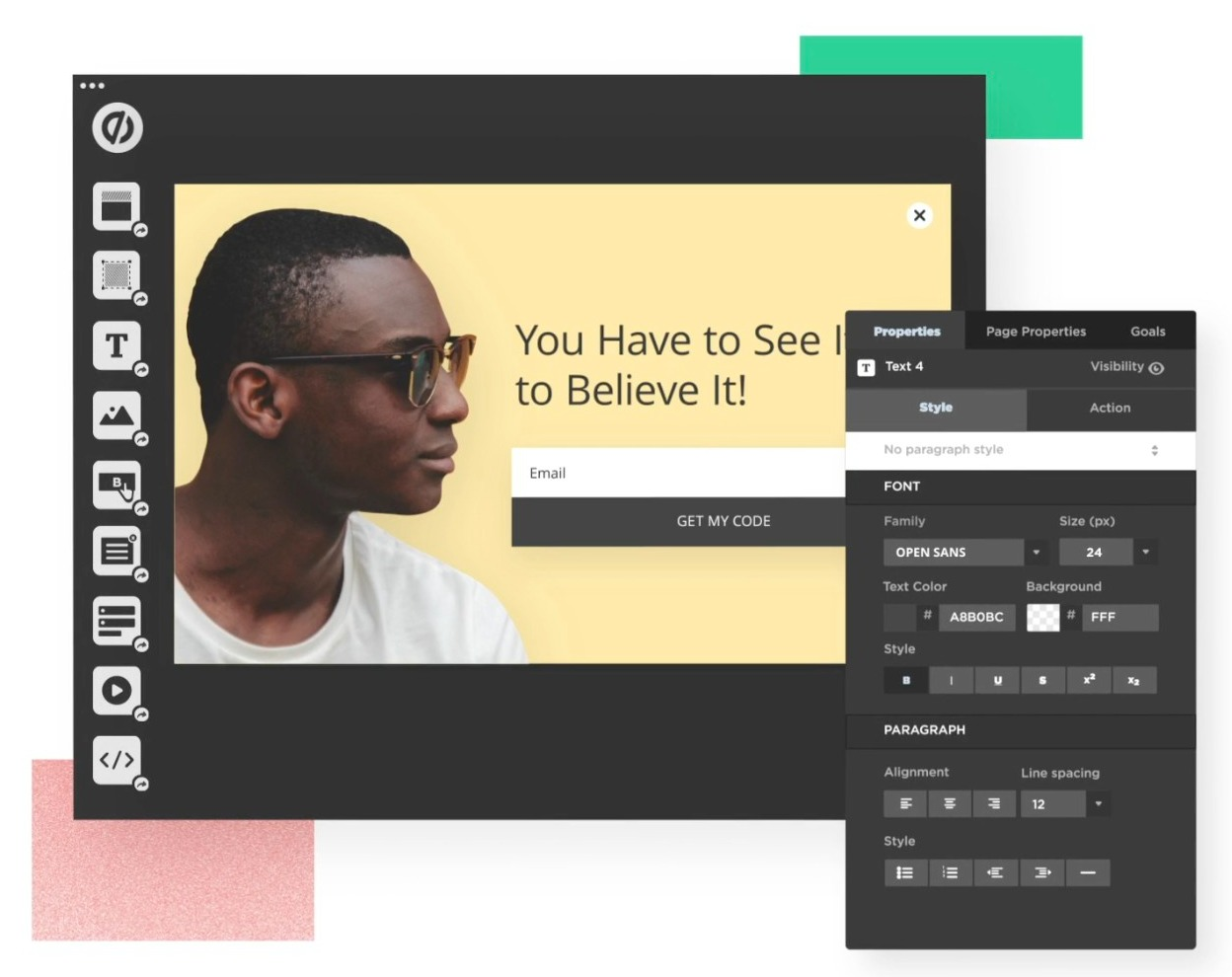

The Dynamic Text Replacement feature allows the text to dynamically change based on the search terms or other parameters, which can significantly increase your conversion rates.
The scheduling feature means you can schedule your sticky bars ahead of time. This great feature helps you stay on top of seasonal promotions and ensure everything is up to date.
All Unbounce forms can be easily integrated with various CRM and email marketing services to automate lead capture and follow-up processes.
You can create eye-catching pop-ups and sticky bars with Leadpages, too. Like Unbounce, Leadpages allows you to create triggered pop-ups that show up after a certain amount of time has elapsed, or when a visitor has clicked on a certain image or button on your site.
Leadpages also uses a drag-and-drop builder to create sticky bars and pop-ups. Every element can be customized, and you can add images, texts, buttons, and forms, depending on your specific requirements.
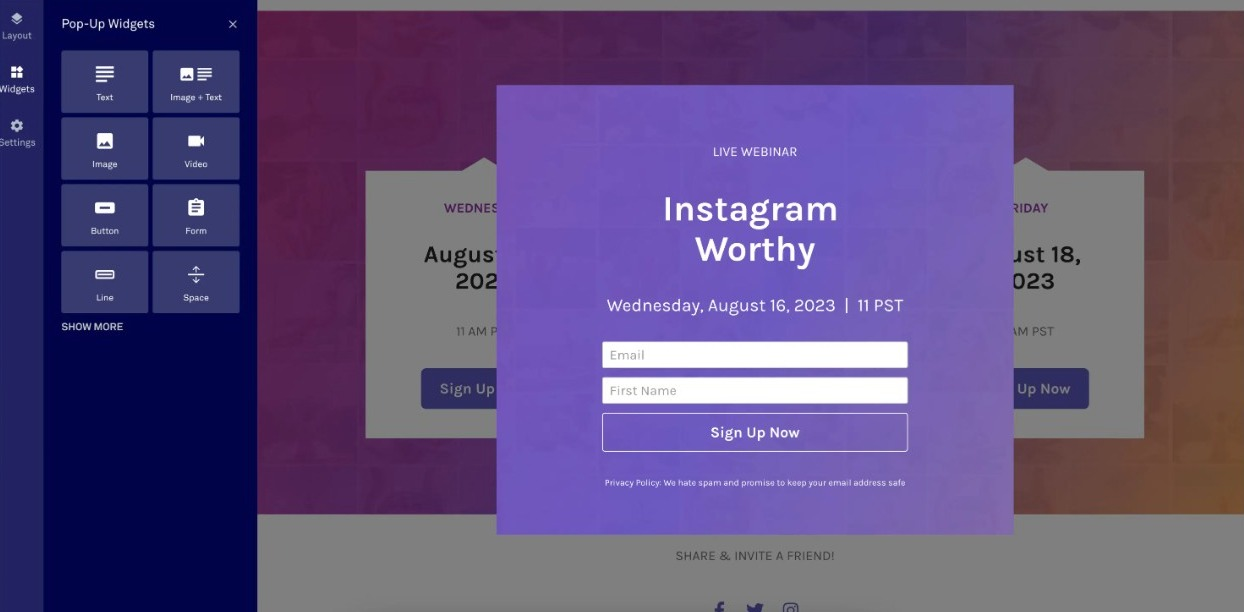

Simplicity is a big part of what Leadpages offers. Pop-ups and alert bars can be published to your landing page, WordPress site, or other website in just a few clicks.
The Verdict: The biggest difference between Leadpages and Unbounce when it comes to pop-ups and sticky bars is the dynamic text replacement feature. This allows a higher rate of optimization, and therefore, Unbounce wins this round.
AI Features (Unbounce Wins!)
Both Unbounce and Leadpages incorporate AI and machine learning technologies to enhance their platforms and improve user outcomes, particularly in the areas of conversion optimization and personalization.
One of Unbounce’s hallmark AI features, Smart Traffic, uses machine learning to automatically route visitors to the version of a landing page that is most likely to convert based on their characteristics. This decision is made in real time and becomes more effective as more data is collected, potentially increasing conversion rates without manual A/B testing.
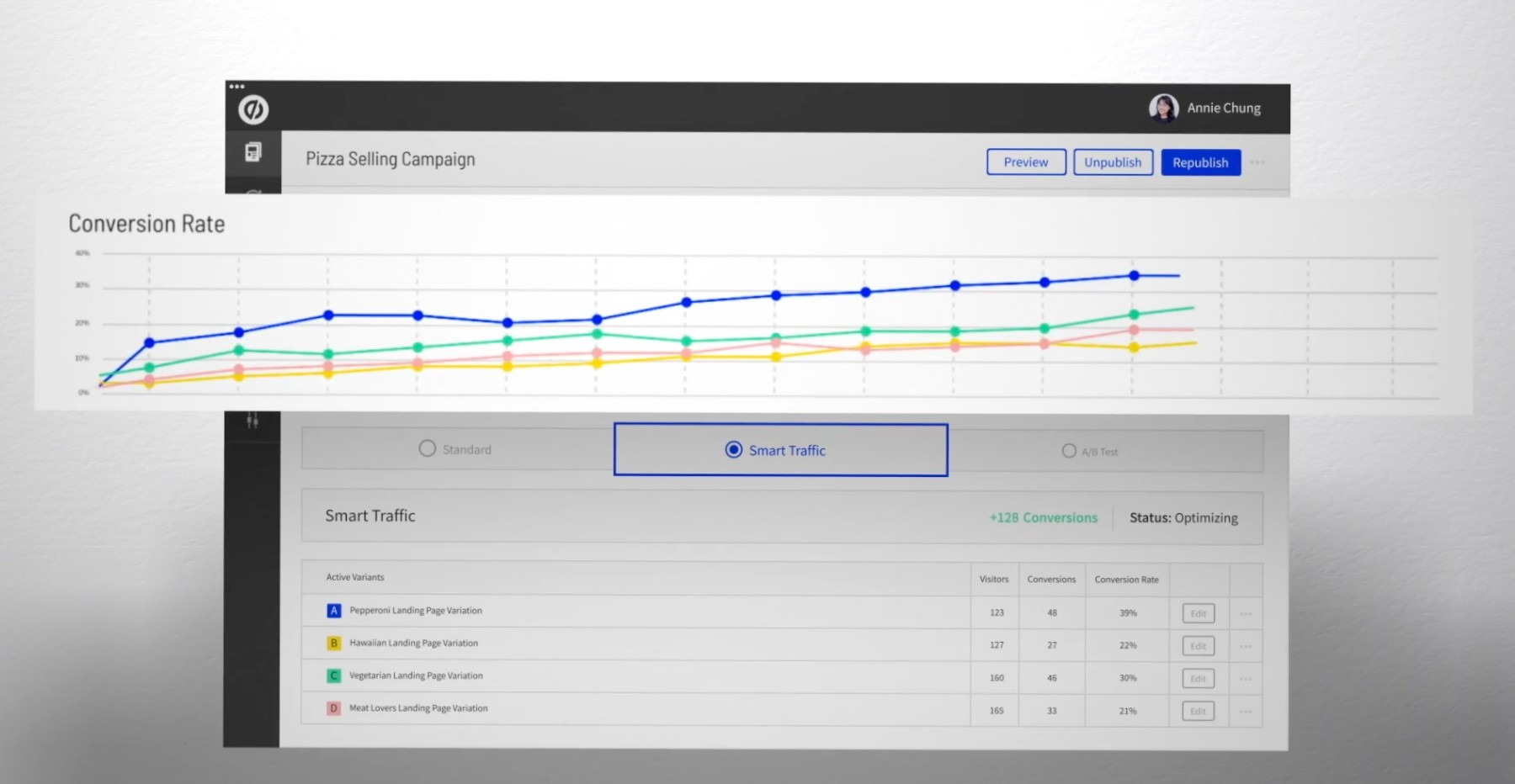

While not exclusively an AI feature, DTR (Dynamic Text Replacement) works well with Smart Traffic by dynamically altering text on landing pages (including calls to action, headlines, etc.) based on keywords or parameters. This can be used to create a more personalized visitor experience, potentially improving conversion rates.
Leadpages’ use of AI is more subtle and integrated into the overall functionality of the platform rather than highlighted as a standalone feature.
One of Leadpages’ stand-out features is Leadmeter. This AI-powered optimization tool analyzes your landing page in real-time and provides feedback on how likely it is to convert visitors into leads. It offers suggestions for improvement based on the analysis of:
- Layout
- Readability
- Lead generation
- Call-to-action.
Both platforms allow you to integrate with external AI-powered tools through various marketing and CRM platforms.
The Verdict: Unbounce Wins! Overall Unbounce offers more in the way of AI features, particularly with its Smart Traffic and Dynamic Text Replacement features. These directly leverage AI to optimize conversion rates through personalization and real-time adaptation.
Lead Management (Leadpages Wins!)
Unbounce seamlessly connects with the most popular CRM tools to help you keep track of your leads at every stage of the customer journey.
As new leads come in, you can automatically notify your sales team so they can follow up as soon as possible.
Leadpages collect your leads in the ‘Lead Library.’ This means you can access your leads any time you need. Lead Library is not a CRM, though. If you want full CRM functionality, you can integrate it directly with your favorite CRM software.
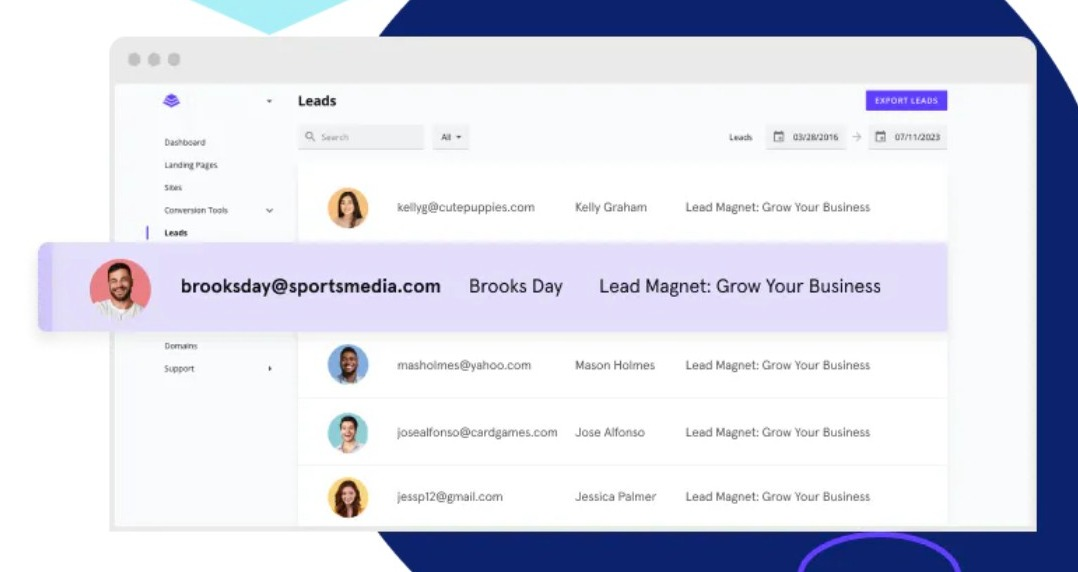

Like Unbounce, Leadpages also allows you to receive notifications whenever a new lead comes in. You can also upload your lead magnets directly to your Leadpages account so they can be delivered to your leads as soon as they sign up.
Integrations (It’s a Tie!)
Both Unbounce and Leadpages offer a good range of integrations, so whatever type of business you run, you should be able to connect your favorite tools seamlessly.
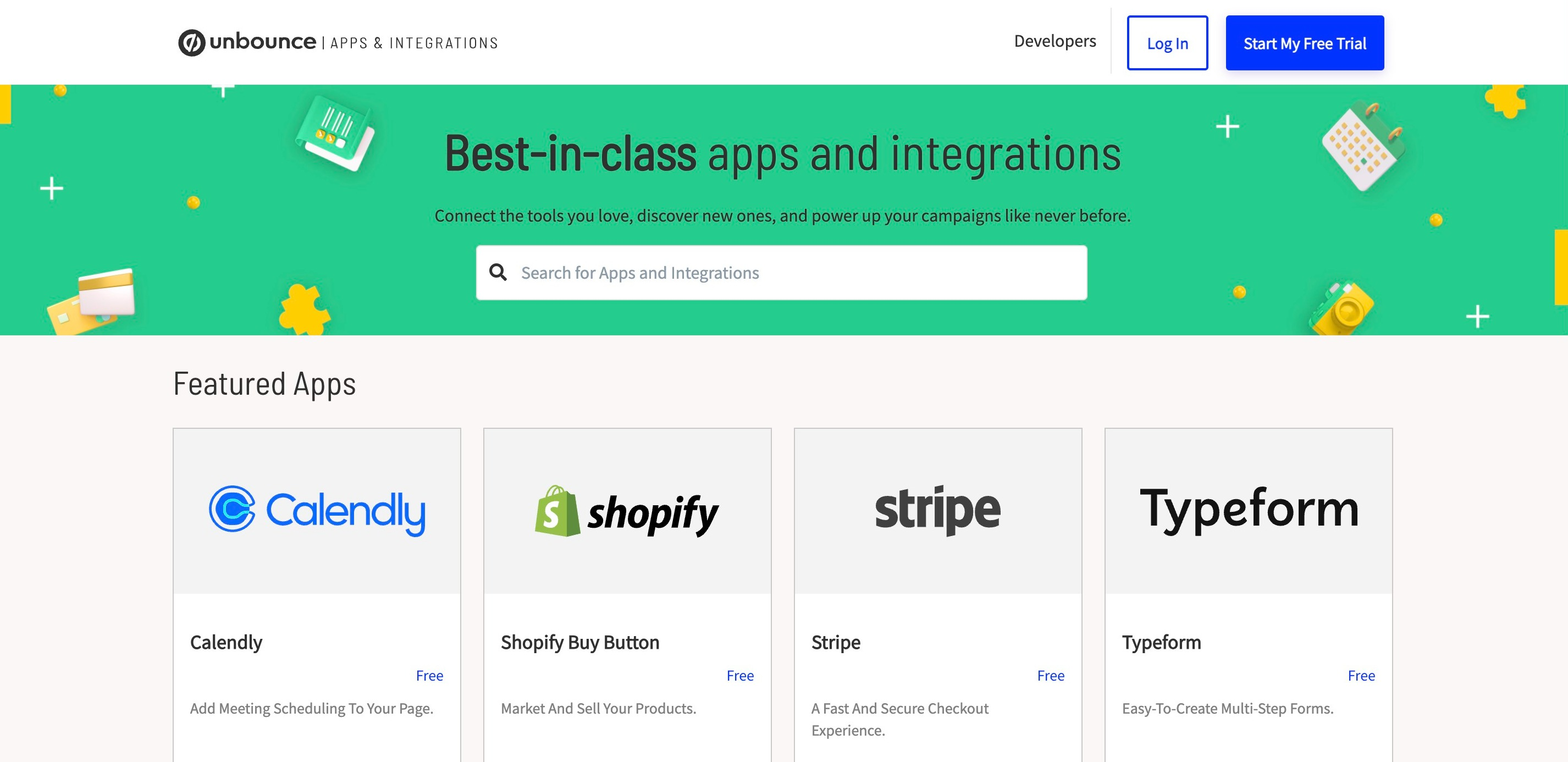

Unbounce offers 21 integrations and 34 apps for users to connect to their Unbounce account.
Popular integrations include:
- Google Analytics
- Salesforce
- Hubspot
- Zapier
- HotJar
- ActiveCampaign.
And popular apps include the likes of Shopify, PayPal, Stripe, Typeform, and more.
If you want to connect to any other platforms, you can easily do that using the Zapier integration.
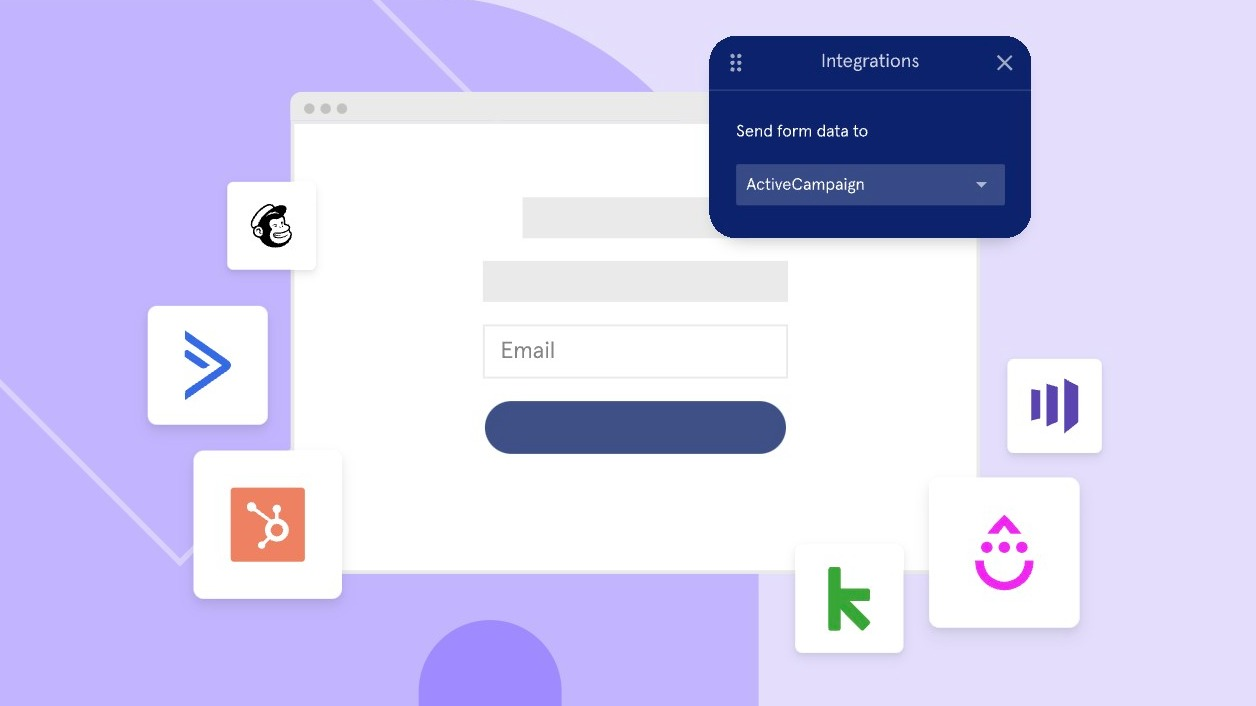

Leadpages offers a good number of native integrations too, including
- HubSpot
- Salesforce
- Google analytics
- Facebook ads
- Shopify
- ActiveCampaign
- Aweber
And plenty more. Anything not included on the native integrations list can usually be connected via Zapier.
The Verdict: It’s a Tie! Both platforms offer a good range of integrations with everything from CRM tools to social media and analytics tools.
Which is Easier to Use? (Leadpages Wins!)
Between Unbounce and Leadpages, Leadpages is generally considered easier to use. If you’re looking for simplicity and speed in creating landing pages, pop-ups, and lead capture forms, you really can’t go wrong with Leadpages.
That being said, Unbounce is pretty user-friendly, too—it has many more features and customization options to consider. The good news is its new AI features make creating landing pages super quick and easy. There is a little bit of a learning curve at first, but once you’ve got into the swing of things, it’s become a very user-friendly platform.
The Verdict: It’s a close call, but overall, Leadpages is slightly easier to use than Unbounce thanks to its focus on simplicity and intuitiveness. This makes it accessible for users of all skill levels who want to create professional marketing campaigns.
Unbounce vs Leadpages: Pricing
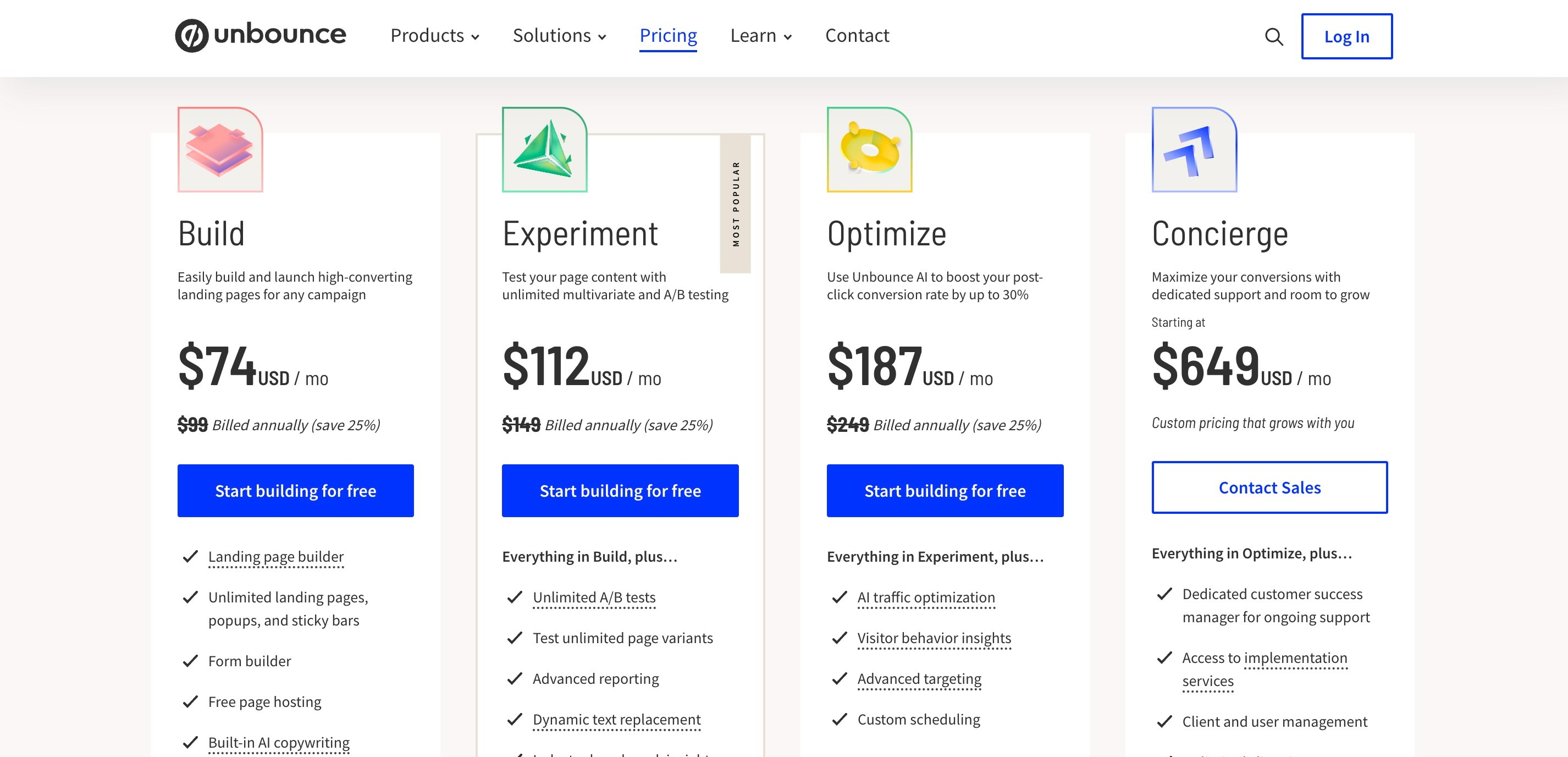

Unbounce offers four pricing plans to suit businesses of all sizes.
- Build – $74/month. This plan includes the landing page builder, unlimited landing pages, pop-ups, and sticky bars, free page hosting, AI copywriting, 1 root domain, and up to 20,000 visitors per month.
- Experiment – $112/month. This plan includes everything from Build, plus unlimited A/B testing, advanced reporting, Dynamic Text Replacement, 2 root domains, and up to 30,000 monthly visitors.
- Optimize – $187/month. This plan includes everything from Build and Experiment, plus AI traffic optimization, visitor behavior insights, and advanced targeting. It also includes custom scheduling, 3 root domains, and up to 50,000 monthly visitors.
- Concierge – $649/month. All features, plus a dedicated customer success manager, implementation services, and also higher limits for root domains and monthly visitors.
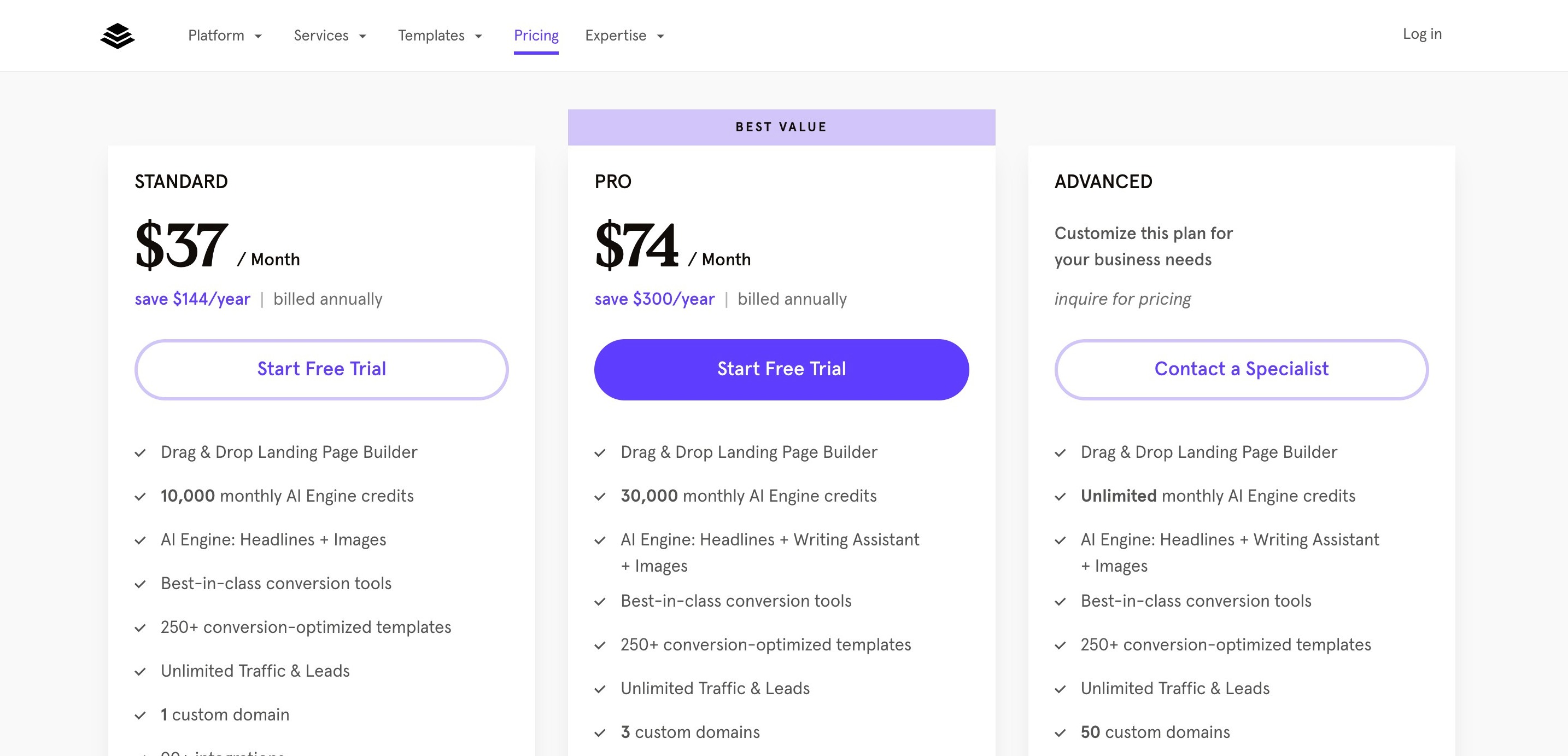

Leadpages offers three main plans: Standard, Pro, and Advanced.
- Standard – $37/month. This plan includes the drag-and-drop landing page builder, 10,000 monthly AI engine credits, AI headlines and images, CRO tools, page templates, unlimited traffic and leads, and 1 custom domain.
- Pro – $74/month. This plan includes everything from Standard, plus 30,000 monthly AI credits, AI writing assistant, and 3 custom domains.
The Advanced plan offers custom features and limits. Contact Unbounce directly for a custom quote.
Unbounce vs Leadpages: The Verdict
So, who came out on top in the battle between Unbounce vs Leadpages?
It’s a close call, but overall Unbounce is the winner here. It has more customization options, and better optimization features than Leadpages thanks to its clever use of AI. If you want to dive deeper into what Unbounce has to offer, you can check out our in-depth Unbounce review.
That being said, Leadpages still shouldn’t be overlooked. Sure, it doesn’t have as many bells and whistles, but it still does a fantastic job and is super easy to use. It’s also half the price of Unbounce, so it’s a great choice for bloggers, solopreneurs, coaches, and other small businesses. It’s worth every penny. Check out our full Leadpages review to learn more about this powerful platform.
Unbounce, on the other hand, is the best landing page builder for users who need more control over the design and functionality of their landing pages and are willing to invest more time in learning the platform to leverage its full potential, including its AI and optimization features.